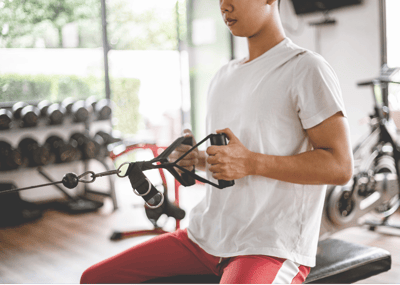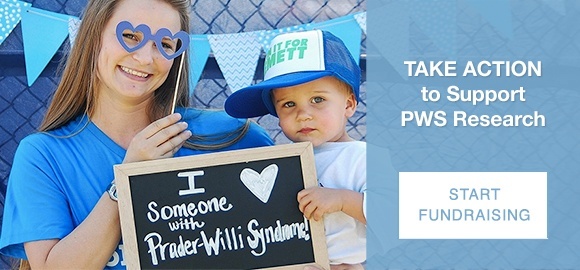It is well known that individuals with Prader-Willi syndrome (PWS) display muscle weakness, hypotonia, and decreased lean muscle mass. Those with PWS have a 25–40% decrease in muscle mass compared to non-affected individuals, and muscle strength is approximately 70% lower than that of those without PWS. These factors contribute to delays in motor development and mobility issues that can persist into adulthood and negatively impact overall physical wellbeing.
Findings from three small studies in individuals with PWS (references below) suggest improvements in muscle strength and mass gained via muscle strengthening activities can lead to improvements in physical activity. In other disability populations, it has also been shown that progressive resistance training results in improvements in muscle mass.

Using supplemental funding from the Foundation for Prader-Willi Research, combined with funding from the Prader-Willi Research Foundation of Australia and the Australian government, Nora Shields and colleagues are conducting a multisite randomized clinical trial in which 60 individuals with PWS participate in an exercise program. Half are randomized to the study arm, where they are directed in a progressive resistance training program, and the other half participate in non-progressive exercise.
This study primarily aims to evaluate if a progressive resistance training program is effective in improving muscle strength. Secondary aims include the evaluation of muscle mass, changes in quality of life and behavior, and community participation. The efficacy and cost-effectiveness of the training program will be measured to help inform health and disability-related policy decisions and aid families in making evidence-based, informed healthcare decisions for their loved one with PWS.
The trial began enrolling in 2020 and will conclude in the fall of 2023. Eligibility criteria included individuals with a confirmed diagnosis of PWS living in Australia, aged 13–60, with no contraindications to exercise. All study participants, under the direction of an exercise professional, receive training scheduled two times per week for 24 weeks focused on six exercises, three for the upper limbs and three for the lower limbs, completed on pin-loaded weight machines. Participants complete three sets of 12 repetitions of each exercise, and workouts last about 1 hour. Workouts are detailed in a logbook after completion. Those in the experimental group have increasing resistance added to the training protocol, while those in the control group complete the same exercise at a low intensity with no progression in resistance. The exercise professionals provide encouragement, physical support, and monitoring to ensure food security in the environment.
A number of baseline assessments are completed, including muscle strength, muscle mass (measured via dual energy X-ray absorptiometry, or DXA scan), functional strength, physical activity, community participation, quality of life measures, behavior measures, healthcare utilization, and diet. These same areas are assessed again at the completion of the intervention (Week 25) and at 1 year (Week 52). Upon trail completion, the data will be analyzed for changes in muscle strength and mass. The health and economic impact will be assessed for cost effectiveness.
Improving muscle strength could have a positive impact on individuals with PWS by improving the ease of physical exercise and reducing obesity and obesity-related health issues. Reducing sedentary behavior may be possible if muscle strength improves and barriers to physical activity are reduced. A positive impact on caregiver burden would be expected if the person with PWS required less assistance with physical activity. Establishing routine exercise behavior may improve the daily living and physical mobility of individuals with PWS.
Currently, there is little literature addressing the design and implementation of exercise programs for individuals with intellectual disabilities, including PWS. At trial completion, these researchers will develop free resources that can be used by exercise professionals, community exercise programs, and health agencies to support individuals with PWS and their families. They will share best practices on how to implement an effective exercise program and provide training materials for professionals who are working with individuals with PWS. With this study, the researchers hope to provide high-quality evidence supporting the efficacy and cost-effectiveness of a community-based exercise intervention for people with PWS. We look forward to learning about the outcomes of this study.
Eiholzer U, Nordmann Y, l'Allemand D, et al. Improving body composition and physical activity in Prader-Willi syndrome. J Pediatr 2003;142:73–8.
Schlumpf M, Eiholzer U, Gygax M, et al. A daily comprehensive muscle training programme increases lean mass and spontaneous activity in children with Prader-Willi syndrome after 6 months. J Pediatr Endocrinol Metab 2006;19:65–74
Vismara L, Cimolin V, Grugni G, et al. Effectiveness of a 6-month home-based training program in Prader-Willi patients. Res Dev Disabil 2010;31:1373–9







